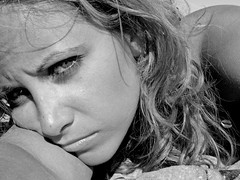
The Aging Process On The Surface
We love the sun! The sun is often a symbol of a hopeful happy day in contrast to the gloomy rain or the cold. The sun is typically associated with holidays at the beach where we love to soak in its rays to get that coveted holiday sun-kissed complexion. However, it has become undeniable that exposure to its rays can contribute a lot to the aging process, particularly skin aging. Read more about the effects of the sun to your body to help you decide if you still want to recline under the seething star.
The Notorious Extrinsic Factor In The Aging Process
The ultraviolet rays of the sun and infrared radiation is one of the external perpetrators of skin aging. Besides causing cancer, constant exposure to the sun can hasten and play up almost all the indications of aging including age spots, wrinkling, sagging, rough and leathery skin, fine lines, blotchy complexion and the yellowing of the skin that is linked to aging. We also very well know that we can develop sunburn, a form of injury that can accrue overtime, when we roast ourselves under the sun without putting on protection.
Photoaging – The Aging Process Triggered By The Sun
Dermatologists call this aging process triggered by sun exposure as “photoaging”. Different people respond to photoaging differently. Fair-skinned people are more prone to develop more signs of aging than dark-skinned folks. Photoaging in very dark people can manifest only as fine wrinkles and a blotched complexion. The gravity of the effects of photoaging also depends on the history of long-term or severe exposure to the sun. Fair skinned individuals who have a history of sun exposure are more predisposed to the aging process caused by the sun.
Although it appears as though photoaging can occur overnight, it does not. Repeated exposure to the sun over a span of years can cause the skin to lose its ability to self-repair leading to a build-up of the damage. Research has demonstrated that frequent subjection to ultraviolet rays disintegrates collagen and undermine the production of new collagen. The sun also beats up elastin, a protein that gives tissues to return to their original form after having been stretched. Young skin can easily recover from being stretched while old skin may take some seconds before it can resume to its original form.
Notwithstanding the fact that photoaging appears superficially, it initially cannot be seen by the naked eye as it resides under the skin surface for years. The extent of the damage can be seen using UV photography. This damage usually does not show up immediately but may take years, that is why, many people are taken aback by the extent of photoaging that the UV camera captures.
Signs of photoaging can appear among people living in Florida, Arizona and other sunny places even as earsly as their 20’s. There are even people in their 20’s in these areas who suffer from actinic keratoses or the thick wart-like, rough and reddish marks of the skin and skin cancer.
If you want to slow or even reverse the aging process of the skin learn to respect the sun.
The aging process is triggered by many factors, both external and internal. One of the most notorious external factors is frequent exposure to the sun’s UV rays that can lead to photoaging and are manifested by wrinkles, fines lines, AK, sagging, blotches and other skin imperfections that make you look old. So remember to lather some sunblock lotion or wear a hat before doing your thing under the sun.
See related articles.
“Skin Protection from the Summer Sun”
